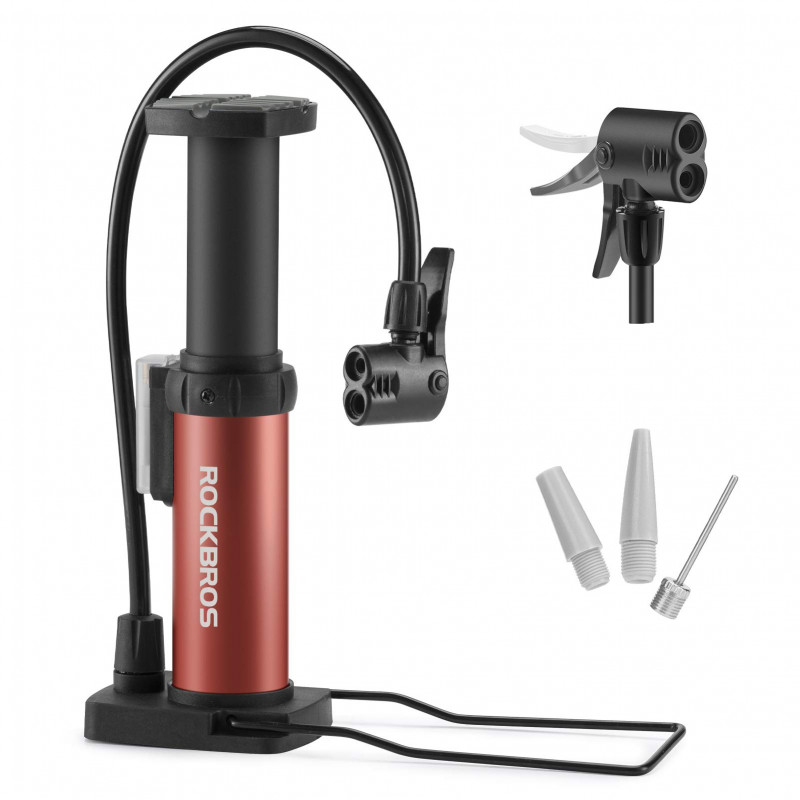What to Do When Your Bike Brakes Fail

Introduction
Cycling is a popular form of exercise and transportation that offers numerous health benefits. Whether you're a beginner or an experienced cyclist, muscle fatigue can be a common challenge that affects your performance and enjoyment of the activity. In this article, we will explore effective strategies to prevent muscle fatigue while cycling, allowing you to maximize your riding experience and achieve your fitness goals.
Understanding Muscle Fatigue
Muscle fatigue occurs when your muscles become exhausted and are unable to perform at their optimal level. During cycling, the repetitive motion of pedaling, especially during long rides or intense workouts, can lead to muscle fatigue. It is important to address this issue to avoid discomfort, decrease the risk of injury, and improve your cycling performance.
Importance of Preventing Muscle Fatigue in Cycling
Preventing muscle fatigue is crucial for maintaining endurance, power, and efficiency while cycling. By implementing effective strategies, you can prolong your rides, increase your overall mileage, and enhance your ability to tackle challenging terrains. Moreover, preventing muscle fatigue can also improve your post-ride recovery, allowing you to bounce back quicker for your next cycling adventure.
Proper Warm-Up and Stretching
Before hopping on your bike, it is essential to warm up your muscles and perform stretching exercises. This helps increase blood flow, improve muscle flexibility, and reduce the risk of muscle strains and injuries. Begin with light aerobic exercises like jogging or jumping jacks, followed by dynamic stretches that target major muscle groups used during cycling, such as the quadriceps, hamstrings, calves, and hip flexors.
Gradual Increase in Intensity and Duration
One common mistake among cyclists, especially beginners, is pushing themselves too hard or riding for extended periods without gradually building their endurance. To prevent muscle fatigue, it is important to progressively increase your cycling intensity and duration. Start with shorter rides at a comfortable pace and gradually increase both distance and intensity over time. This allows your muscles to adapt and strengthen without becoming overwhelmed.
Optimal Cycling Technique and Posture
Proper cycling technique and posture play a vital role in preventing muscle fatigue. Maintain a relaxed grip on the handlebars and ensure your elbows are slightly bent. Engage your core muscles to stabilize your upper body and avoid excessive strain on your lower back. Maintain a consistent cadence and pedal stroke, applying power evenly throughout the entire revolution. Avoid unnecessary tension in your upper body and focus on maintaining a smooth and efficient pedaling motion.
Regular Strength Training and Cross-Training
Incorporating regular strength training exercises into your fitness routine can help prevent muscle fatigue while cycling. Strength training exercises that target the major muscle groups used during cycling, such as the quadriceps, hamstrings, glutes, and core, can improve muscular endurance and power. Additionally, engaging in cross-training activities like swimming or yoga can help balance muscle development, prevent overuse injuries, and enhance overall fitness.
Proper Nutrition and Hydration
Proper nutrition and hydration are key factors in preventing muscle fatigue during cycling. Fuel your body with a balanced diet that includes carbohydrates, proteins, and healthy fats to provide sustained energy. Stay hydrated by drinking water regularly before, during, and after your rides. Dehydration can contribute to muscle fatigue and decrease your overall performance. Additionally, consider consuming electrolyte-rich drinks or sports drinks to replenish essential minerals lost through sweat.
Rest and Recovery
Rest and recovery are essential for preventing muscle fatigue and optimizing your cycling performance. Adequate rest allows your muscles to repair and rebuild, reducing the risk of overuse injuries and improving muscle endurance. Incorporate rest days into your cycling routine and prioritize quality sleep to promote overall recovery.
Monitoring and Listening to Your Body
Listen to your body's signals during cycling. Pay attention to signs of fatigue or discomfort and adjust your intensity or take breaks when needed. Overexertion can lead to muscle fatigue and increase the risk of injuries. It's important to find a balance between pushing yourself and giving your body the rest it needs.
Using the Right Cycling Gear and Equipment
Investing in proper cycling gear and equipment can significantly contribute to preventing muscle fatigue. Start with a well-fitted bike that suits your body proportions and riding style. Ensure your saddle height and handlebar position are adjusted correctly to minimize strain on your muscles. Additionally, wear padded cycling shorts to reduce friction and pressure points, and use cycling shoes with a stiff sole for efficient power transfer.
Incorporating Variety in Your Cycling Routine
Adding variety to your cycling routine can prevent muscle fatigue caused by repetitive motion. Explore different terrains, such as hills or trails, to engage different muscle groups and challenge your body in new ways. Consider incorporating interval training, where you alternate between high-intensity bursts and recovery periods, to improve your cardiovascular fitness and muscle endurance.
Seeking Professional Guidance
If you're new to cycling or struggling with persistent muscle fatigue, seeking professional guidance from a cycling coach or trainer can be beneficial. They can assess your technique, provide personalized training plans, and offer expert advice on preventing muscle fatigue. A professional can also help you address any imbalances or weaknesses that may contribute to fatigue.
Conclusion
Preventing muscle fatigue while cycling is essential for maximizing your riding experience and achieving your fitness goals. By incorporating strategies such as proper warm-up and stretching, gradual intensity progression, optimal technique and posture, regular strength training, proper nutrition and hydration, rest and recovery, listening to your body, using the right gear, incorporating variety, and seeking professional guidance, you can enhance your cycling performance and enjoy longer, more fulfilling rides.
FAQs
Q: How long does it take to prevent muscle fatigue while cycling?
A: The time it takes to prevent muscle fatigue varies depending on individual fitness levels and training consistency. With proper training and implementation of strategies, noticeable improvements can be observed within a few weeks to a couple of months.
Q: Are there any supplements that can help prevent muscle fatigue during cycling?
A: While a balanced diet is usually sufficient, some cyclists may benefit from supplementing with sports drinks or electrolyte replacements during intense or prolonged rides. It's best to consult with a healthcare professional or sports nutritionist for personalized recommendations.
Q: Can muscle fatigue be completely avoided during cycling?
A: Muscle fatigue is a natural physiological response to exertion. However, by implementing the strategies mentioned in this article, you can significantly reduce the severity and duration of muscle fatigue, allowing you to ride longer and more comfortably.
Q: Should I stretch before or after cycling to prevent muscle fatigue?
A: It is recommended to perform dynamic stretches before cycling as part of your warm-up routine. Save static stretching for after your ride to help cool down and improve flexibility.
Q: Can muscle fatigue lead to long-term damage?
A: Muscle fatigue itself is a temporary condition and usually subsides with rest and recovery. However, if muscle fatigue is consistently ignored or if improper training techniques are continued, it can potentially lead to overuse injuries or chronic muscle imbalances. It's important to listen to your body, address fatigue appropriately, and seek professional guidance if needed to prevent long-term damage.









